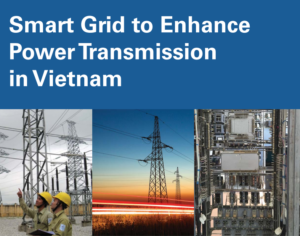
The World Bank has closely engaged with National Power Transmission Corporation (NPT), the Electricity Regulatory Authority of Vietnam (ERAV) and the National Load Dispatch Center (NLDC) to refine the existing Smart Grid roadmap on the basis of the lessons learned from the international experience with Smart Grid development. This report presents the results of this technical assistance engagement funded by the Energy Sector Management Assistance Program (ESMAP) and the Asia Sustainable and Alternative Energy Program (ASTAE) and consists of: (i) a technical analysis of Vietnam’s existing Smart Grid roadmap, and alternative and future options (Volume 1); (ii) cost-benefit and risk analyses of the Smart Grid options identified in the technical analysis (Volume 2); and (iii) considerations of regulatory and performance monitoring (Volume 3).
| Smart Grid Initiative | Technical Benefits |
|---|---|
| SAS, including remote control centers | 60% reduction of OPEX1 for the transmission system Average reduction of ENS2 by 100 MWh/y per substation equipped |
| WAMS | 10% reduction of OPEX for the transmission system. 20% less faults if all substations are equipped with PMUs3 |
| LLS | 5% reduction of OPEX for the transmission system 25% reduction of phase-to-phase-to-ground faults caused by lighting |
| SVC | 10% reduction of OPEX for the transmission system 25% reduction of voltage collapse events |
| FLS | 25% reduction in time taken to attend and repair the fault |
| DGA | 80% of faults prevented by equipping a transformer with a DGA device |
| DTCR | 5% reduction of OPEX for the transmission system |
| GIS | 10% reduction of total OPEX of the SAS project |
| Power Quality Monitoring and Metering Data Acquisition Systems | 5% reduction of OPEX for the transmission system 20% reduction of fault times |
Source: Authors
Notes:
- Operational Expenses
- Energy Not Served
- Phase Measurement Units
The report proposes a revised Smart Grid roadmap containing the following components: (i) Substation Automation System; (ii) Wide Area Monitoring Systems; (iii) Lighting Location System LLS; (iv) Static Var Compensator; (v) Fault Locator System; (vi) On-line Dissolved Gas-in-oil Analysis; (vii) Dynamic Thermal Circuit Rating; (viii) Geographic Information Systems; and (ix) Power quality monitoring and Metering Data Acquisition Systems.
| Smart Grid Initiative | Capital Cost (USD min) | NPV (USD min) | IRR4 | Scale of Operation |
|---|---|---|---|---|
| SAS, including remote control centers | 1479 | 179.0 | 41% | 18 retrofits 150 new SAS |
| WAMS | 1.3 | 23.0 | 204% | 224 PMU installed at 500 kV and 220 kV voltage level |
| LLS | 1.4 | 11.0 | 164% | 20 detectors monitoring lightning activity across the country |
| SVC | 25.0 | 5.3 | 14% | 900 Mvar SVCs installed in the most affected areas of Vietnam |
| FLS | 73 | 1.2 | 13% | 140 Fault Locators |
| DGA | 41.7 | 5.5 | 12% | 732 transformers equipped, (includes current and new) |
| DTCR | 1.1 | 44.1 | Positive Cash Flows | 40 sensors monitoring 400 km lines |
| GIS | 0.2 | 0.8 | 48% | Geographic information of power system components throughout Vietnam |
| Power Quality Monitoring and Metering Data Acquisition Systems | 0.2 | 11.0 | 797% | 105 power quality measurement devices at 500 kV and 220 kV voltage level |
Source: Authors
In addition to Smart Grid technologies, High Voltage Direct Current (HVDC) technology is also considered in the analysis. The construction of a new HVDC line is not a Smart Grid initiative itself, but the choice of the HVDC technology for building over planned conventional AC lines introduces certain desirable characteristics in the grid to render it more secure. The design of the grid therefore is smart and the incremental benefits associated with the HVDC line over the planned AC line have been considered in the analysis. In particular, the adoption of HVDC can contribute to reduce the transmission system OPEX by 5%.
The cost-benefit analysis performed shows that all identified Smart Grid solutions have positive Net Present Values (NPVs).